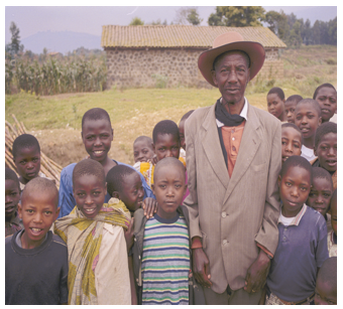
It will sound a little stupid (and somewhat arrogant), but I think I could have transformed Rwandan society with
10 blue blazers
10 raincoats
10 umbrellas and
5 indiana jones hats
The logic is simple:
Go to any hotel, bar, restaurant, sidewalk or marketplace in Rwanda and you see people trying to look their best. Despite the level of poverty, fashion means a great deal to the Rwandans and as something of a sartiorialist/dandy - my inner New Yorker, on this dimension I fit right in.
You see African dresses on the women and traditional fabric on some males. But most of the time you see men adorning themselves with the garb of a “gentlemen”:
Shirt
Jacket
Hat
Shoes
Tie
If they have these items they will wear them and if they do no, then they will acquire them in this order of priority. I would have figured that shoes went higher in the pecking order but I think that these are just a harder item to acquire and thus they fall a bit down. The position of the tie makes sense. GIven the sun, I would have placed the hat higher but there is something about the necessity of a shirt.
In even the most remote villages, the process is clear. You pull up in some dirt poor place with mud houses, straw roofs, banana fields and winding roads cutting through hills, searing heat. In the background, people tend emaciated cows and children sit on the side of a hill buck naked. and then you pull up
first, the kids arrive to check you out – they generally have little to no clothing
second, some older folks show up (30+ because life-expectancy is low) to see what you will do.
At some point, the crowd parts and the local leader emerges –
- The Nyumba Kumi (the government, official appointed in every 10 households to oversee the comings and
- The Nyumba-Kumi always has a full outfit almost as if these were passed out when they signed up
These are not the only sartorial differences one sees. Once in a place and given the reality mystery tour you see other
garmented-coded dynamics:
Pants and raincoat – usually an older gentlemen
Pants and t-shirt – younger gentlemen
Traditional fabric wrap – all women
Hat, shirt and wrap – miscellaneous men
No shirts – rural and poorer men
The hierarchy is this transparent. It’s right there. In Rwanda, the clothes make the man/woman as well as the society. And, this society is one composed of immense economic inequality between the haves, have nots, never hads and never gonna gets while the first gots. Of course, I remembered the line from Meryn Cadell: "if the clothes makes the man, and the woman makes the clothes, then what does that make the woman", but I digress.
Reflecting on the clothing situation, this is where I had my idea; my Rwandan conversion strategy:
One could give out the jackets and other stuff randomly to people on the road who could then wear them.
Upsetting a balance or equilibrium, this would upset almost all of the socio-political dynamics in the society. Walking into a village, one would not encounter one jacket but there would be two. Walking up a hill, you would find not two hats but three.
The gear need not be too nice: H&M over DKNY. Here, symbol seems to be more important than style.
Of course, the imbalance might not be all good. There might be a reason why there is only one blazer in a community. If this is the case, however, it suggests a heightened degree of fragility. If one lost suitcase from a stylish New Yorker or San Franciscan could send all of Rwanda into a tailspin, from the bottom, then this does not seem to represent the paragon of stability that most think of when they consider the country.

 RSS Feed
RSS Feed
